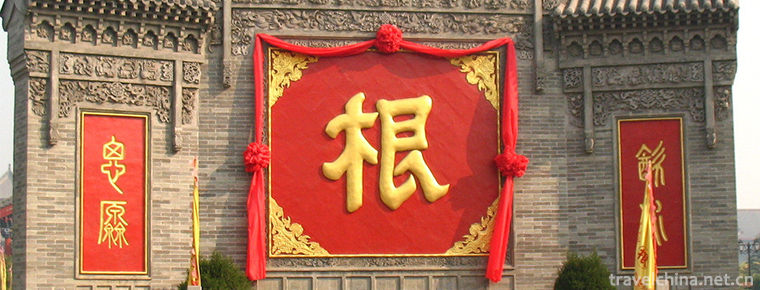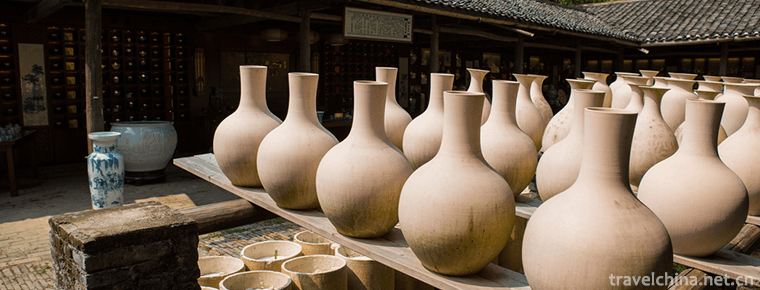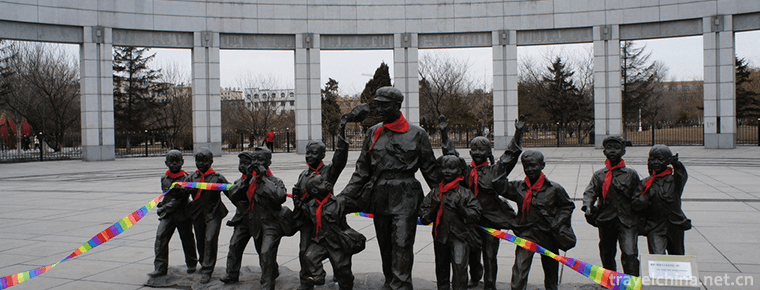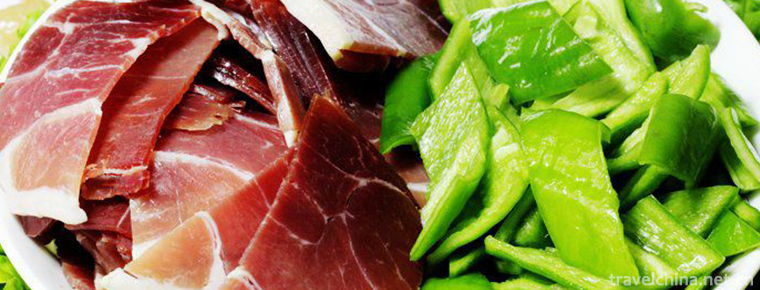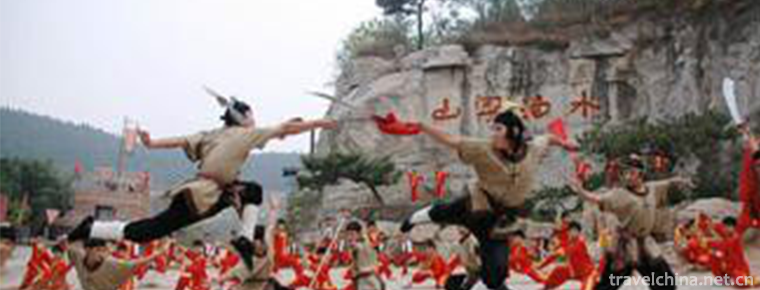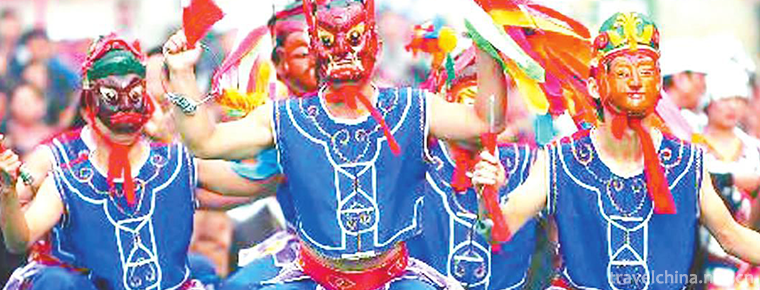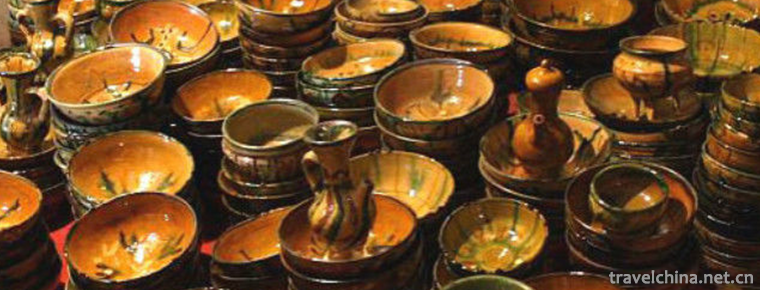Pudong Publicity Book
Pudong Publicity Book
Nanhui Xuanjuan is an ancient traditional art of rap and singing. Xuanjuan originated from "vulgar speaking" in Tang Dynasty and "Tanjing" in Song Dynasty. It is a term used by Buddhists and their followers to preach "Baojuan", which later evolved into folk art. Xuanjuan, also known as "Nian Xuanjuan", first appeared in the temple fair of social drama, then entered the Tea House Hotel and the rural living room. In the countryside, there is a custom of "reading Xuanjuan" from spring tillage to autumn harvest. At the end of the nineteenth century, Suzhou Xuanjuan spread to Zhoupu, Nanhui Xuanjuan spread to Shanghai. Qingpu, Songjiang, Jiading and other Shanghai suburbs were introduced from Kunshan in the late Qing Dynasty and early Republic of China. Therefore, Nanhui Xuanjuan, also known as Pudong Xuanjuan, was the earliest one in Shanghai.
origin
The earliest form of publicity performance is single-file, one person sings while turning the publicity roll while hitting wooden fish. After the formation of double gear, that is, a bell. Nanhui's roll is in four stalls, the left side of the desk is for the master, and the actor is playing "Lao Lang" (sandalwood board); behind the master, she sits down and plays female actors (ladies, girls, etc.) as well as big and small wooden fish; in front of the right, she pulls Erhu, sings dragon tunes, and plays the roles of "Running Dragon Set" (hiring, duty, etc.); in the back of the right, she knocks "hitter" (hitting bells), and plays backhorns and heels. Sing and drag. "Four stalls" roll-out actors are shrewd, with clear roles and strong artistic appeal.
Xuanjuan has rich bibliographies and long stories, such as Shuangzhufeng, He Wenxiu and Xiaodeng Ji. Its short stories are very distinctive, such as "Flower Names in December" and "Flower Names in December" and so on.
Present situation
Nanhui Xuanjuan has always been closely linked with current affairs and politics, such as holding special singing performances to celebrate the victory of the Anti-Japanese War in the period of the Anti-Japanese War, publicizing the Marriage Law "Daughter-in-law sighs" after the founding of the People's Republic of China, and "Family Running for Riches" during the period of reform and opening up. Up to now, the Xuanjuan is still a popular traditional folk music art in Zhoupu, Hengwu, and Watt


-
Hongtong Dahuaishu Ancestor Memorial Garden
Located in Hongdong County, Shanxi Province, Hongdong Dahuashu ancestor-seeking scenic spot is the only national sacrificial site with the theme of "root-seeking" and "ancestor-sacrific.
Views: 213 Time 2018-11-24 -
Expo Area of Acient Kiln & Folk Cultures in Jingde
Jingdezhen Ancient Kiln Folklore Expo Area, located in Fengshu Mountain and Panlonggang, Changjiang District, Jingdezhen City, Jiangxi Province.
Views: 516 Time 2018-12-08 -
Leifeng Memorial Hall in Fushun
The Leifeng Memorial Hall in Fushun City is located at No. 61, East Section of Peace Road, Wanghua District, Fushun City, Liaoning Province. It covers an area of 99900 square meters, near the army sta.
Views: 169 Time 2019-01-12 -
Suzhou suburb mudu town
Mudu Ancient Town, nicknamed Duchuan, Xujiang and Xiangxi, is located in the southeast of Jiangsu Province and the west of Suzhou Ancient City. Located in the Taihu Lake Basin.
Views: 136 Time 2019-02-07 -
Wulingyuan
Wulingyuan Scenic Spot is located in the northwest of Hunan Province, central China. Its longitude is 110 20'30 ~110 41'15 and latitude is 29 16'25 ~29 24'25.
Views: 150 Time 2019-02-24 -
Ham making skills
Xuanwei ham production technology is a traditional handicraft in Xuanwei area of Yunnan Province. Xuanwei ham is a famous local traditional specialty..
Views: 162 Time 2019-05-05 -
Liangshan Wushu
Liangshan is the hometown of the heroic stories of the Marsh, the place where the heroes of the Marsh flocked together and opposed oppression and exploitation in past dynasties. At the same time, it i.
Views: 90 Time 2019-05-13 -
Nuo opera
Nuo Opera originated from Fang Xiangshi's exorcism activities in Shang and Zhou Dynasties. After Han Dynasty, it gradually developed into a ritual ceremony with strong entertaining color and opera mus.
Views: 227 Time 2019-06-08 -
Uygur moulding earthenware firing
Uygur moulding pottery has a history of more than two thousand years. After the middle of the ninth century, Uygur ancestors moved westward to the vicinity of the Tarim Basin, inherited the pottery ma.
Views: 184 Time 2019-06-26 -
Four famous Chinese embroidery
Suzhou embroidery is famous for its fine stitches, elegant colors and fine embroidery. It has the characteristics of flat, light, even, harmonious, fine and dense. The theme is mainly about small animals. Such as "cat play", "wind through flowers",.
Views: 316 Time 2020-12-12 -
Meishan special food
Meishan traditional delicacies and specialties include: sugar and oil fruit, spicy sausage, Sichuan fried spring rolls, Dongpo bean curd elbow, stone bean curd, Dongpo cuttlefish, Dongpo sausage, sweet potato sugar, Meishan Qiao Jiao beef, yameizi so.
Views: 241 Time 2020-12-18 -
Guangan primary industry
In 2019, the sown area of grain in Guang'an City is 287000 hectares, and the total grain output is 1.8 million tons, an increase of 1000 tons or 0.04%. Among them, the rice output was 1.047 million tons, down 0.4%; the corn output was 448000 tons, an incre.
Views: 160 Time 2020-12-19
